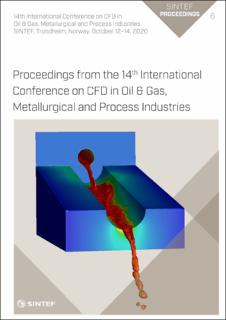| dc.contributor.author | TABIB, Mandar V | |
| dc.contributor.author | MIDTBØ, Knut Helge | |
| dc.contributor.author | SKASLIEN, Tor | |
| dc.contributor.author | RASHEED, Adil | |
| dc.contributor.author | KVAMSDAL, Trond | |
| dc.date.accessioned | 2020-12-22T21:06:11Z | |
| dc.date.available | 2020-12-22T21:06:11Z | |
| dc.date.issued | 2020 | |
| dc.identifier.isbn | 978-82-536-1684-1 | |
| dc.identifier.issn | 2387-4295 | |
| dc.identifier.uri | https://hdl.handle.net/11250/2720859 | |
| dc.description.abstract | The application of Unmanned Aircraft Systems (UAS) in health services is increasing, with a large variety of objectives: delivering medicines and vaccines, transporting blood samples and providing care technology in emergency situations. However, for use in emergency medical purposes, the expectations are a drone should be available at most times. Severe wind conditions are considered to be one of the prime factor that can hamper this expected drone availability. Most of these drone operations are expected to be linked to urban hospitals and understanding urban micro-scale weather patterns are important. The current work tries to develop a methodology for obtaining wind fields in an urban landscape. The multi-scale methodology involves coupling three models operating on different scales namely an operational meso-scale numerical weather prediction model HARMONIE, a micro-scale model that captures terrain-induced wind influence and a super-micro scale Computational Fluid Dynamics code to capture building-induced wind influence. Existence of a large variation in the spatio-temporal scales in an atmospheric flow necessitates such a coupling between different models each of which handles a particular range of scales. In this article, we describe the multi-scale methodology and present a qualitative comparison of the wind velocity predicted by different numerical models with the measured experiment data and then explain the potential of the tool for drone operations. | en_US |
| dc.language.iso | eng | en_US |
| dc.publisher | SINTEF Academic Press | en_US |
| dc.relation.ispartof | 14th International Conference on CFD in 6 Oil & Gas, Metallurgical and Process Industries SINTEF, Trondheim, Norway, October 12–14, 2020 | |
| dc.relation.ispartofseries | SINTEF Proceedings;6 | |
| dc.rights | CC BY | * |
| dc.rights.uri | https://creativecommons.org/licenses/by/4.0/ | * |
| dc.subject | CFD | en_US |
| dc.subject | Drones | en_US |
| dc.subject | Wind | en_US |
| dc.subject | Urban climate | en_US |
| dc.title | TOWARDS UNDERSTANDING WIND IMPACT FOR DRONE OPERATIONS: A COMPARISON OF WIND MODELS OPERATING ON DIFFERENT SCALES IN A NESTED MULTISCALE SET-UP. | en_US |
| dc.type | Chapter | en_US |
| dc.type | Peer reviewed | en_US |
| dc.description.version | publishedVersion | en_US |
| dc.rights.holder | © 2020 The Authors. Published by SINTEF Academic Press. | |
| dc.identifier.cristin | 1862933 | |

